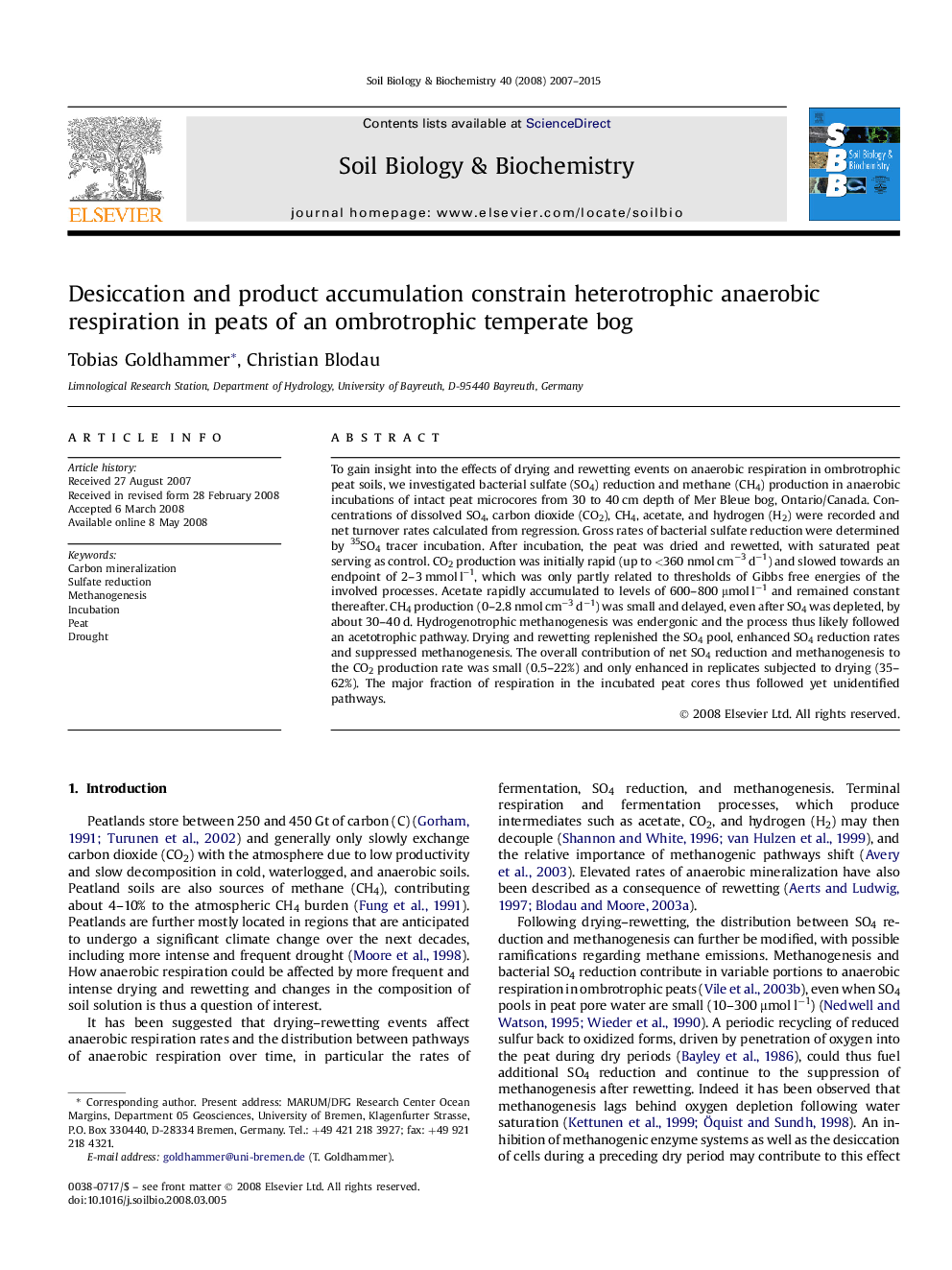| Article ID | Journal | Published Year | Pages | File Type |
|---|---|---|---|---|
| 2026921 | Soil Biology and Biochemistry | 2015 | 9 Pages |
To gain insight into the effects of drying and rewetting events on anaerobic respiration in ombrotrophic peat soils, we investigated bacterial sulfate (SO4) reduction and methane (CH4) production in anaerobic incubations of intact peat microcores from 30 to 40 cm depth of Mer Bleue bog, Ontario/Canada. Concentrations of dissolved SO4, carbon dioxide (CO2), CH4, acetate, and hydrogen (H2) were recorded and net turnover rates calculated from regression. Gross rates of bacterial sulfate reduction were determined by 35SO4 tracer incubation. After incubation, the peat was dried and rewetted, with saturated peat serving as control. CO2 production was initially rapid (up to <360 nmol cm−3 d−1) and slowed towards an endpoint of 2–3 mmol l−1, which was only partly related to thresholds of Gibbs free energies of the involved processes. Acetate rapidly accumulated to levels of 600–800 μmol l−1 and remained constant thereafter. CH4 production (0–2.8 nmol cm−3 d−1) was small and delayed, even after SO4 was depleted, by about 30–40 d. Hydrogenotrophic methanogenesis was endergonic and the process thus likely followed an acetotrophic pathway. Drying and rewetting replenished the SO4 pool, enhanced SO4 reduction rates and suppressed methanogenesis. The overall contribution of net SO4 reduction and methanogenesis to the CO2 production rate was small (0.5–22%) and only enhanced in replicates subjected to drying (35–62%). The major fraction of respiration in the incubated peat cores thus followed yet unidentified pathways.
